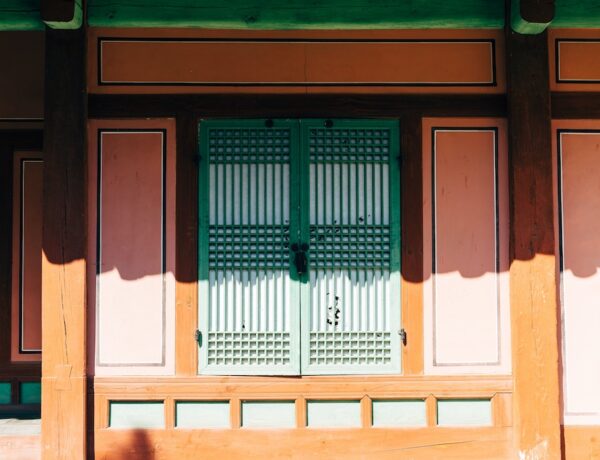You’re never too modern for a little luck…
South Korea. One of the most advanced nations in the world, with one of the fastest internets on the globe and a leading powerhouse for technology, science and engineering. But that doesn’t mean that the average Korean doesn’t want a little bit of extra luck now and then! That is where the bujeok talisman paper comes in! But what exactly is bujeok paper, what is it for and how can you get some?
Where bujeok comes from
The origins of bujeok come from the similar talisman papers that originated in China. Within various sects of Chinese Taoism, these magical papers emerged and were spread throughout Asia. The first recorded evidence of bujeok in Korea can be found in the Samguk Yusa, a historical text compiled during the Middle Ages and reporting on Korea’s previous historical eras. According to this text, early evidence of bujeok in Korea goes back to around 2000 BC. These earlier forms of bujeok included carvings and inscriptions found on cave walls, on rocks and even on clothing. Today bujeok is typically a small to medium sized sheet of rectangular yellow paper inscribed with red ink. Similar talismans can be found in China and other places in Asia.
The symbols and uses of talisman paper
Just about everything regarding the bujeok paper is symbolic. The yellow of the paper is believed to ward off evil spirits. The red ink is believed to represent good luck, good fortune, and auspiciousness. It also is said to represent fire and blood, which are the animating powers of human life and emotion.
Next, bujeok is generally decorated with Classical Chinese characters, symbols found in Buddhism or Taoism, esoteric designs and pictograms and even pictures of various animals. Many examples of bujeok talismans may even include a mix of all three. The pictures and symbols included depend upon what type of talisman paper one is getting. A talisman paper for good health will include different Classical Chinese characters, esoteric symbols or animals than one asking for wealth. And as for the esoteric symbols? These are regarded to be “spirit writing” which can only be understood, deciphered and written by the shaman, monk or fortune teller who has inscribed that particular bujeok paper.
Some animals that are common on bujeok include the tiger, a popular and auspicious symbol in Korean culture to begin with, but also one associated with warding off bad luck and chasing away negative energy and evil spirits. Another common animal found on bujeok is the “three-headed one-legged hawk”. This symbol protects one from the “three calamities” which include disaster by fire, water and wind or from war, plague and famine.
In regards to how, when and where one should display or use their talisman, once again depends on what talisman an individual has acquired. For example, personal bujeok can be carried in the wallet, or even in ones cell-phone case, as is a common practice for many modern Koreans.
To make it even more fun, you can even paste on on the windshield of your scooter:
There are also bujeok talismans that are displayed in the home, around doorways or even on the door itself, on the ceiling, on pillars and support columns. Talismans can also be displayed seasonally, like the talismans that are specially made for good fortune during the winter solstice or lunar New Year.
Here’s an example of a paper next to the doorbel:
And here’s one above a door:
How to get bujeok talismans
While such a mysterious and magical item sounds like it can only be found by scaling a secluded mountain and finding the hidden abode of an immortal or purveyor of magical goods, bujeok talismans are actually pretty simple to come by.
One option is to purchase one at a Buddhist temple. Because Korea’s forms of Buddhism also developed to harmonize with native Korean shamanism, Taoism and Confucianism, talisman papers are made by Buddhist clergy and can be made on special request or sold in temple gift shops. These range in price and usually come in small red envelopes that include a laminated picture of a Buddhist saint, celestial or deity and a copy of the talisman on the obverse side. In addition, the actual bujeok paper will also be included. Another option is to seek out a Korean shaman or mudang. Korean shamanism has been a spiritual tradition since prehistoric times and is still alive and well today. Shamanic shrines or places of residence of shamans can be spotted by their display of a sign or of a Sanskrit style swastika (NOT associated with the Nazi swastika). Shamans can also double as fortune tellers and astrologers. This category of bujeok-inscribers can also be found in relative abundance. This category of spiritual advisors consult massive tomes of astrology, physiognomy and other ancient arts to advise curious individuals on things like career, romance or health. They too can inscribe bujeok. And the last category of bujeok that one can acquiesce is digital downloads. That is not a joke! SK Telecom, a major telecommunications company in Korea even offers bujeok that can be specially downloaded and kept on one’s phone. Talk about ancient wisdom meeting modern technology!
Good luck!
For those who may have been wondering what those yellow sheets of paper are in Korean houses or are interested in procuring some of these talismans for their own luck and fortune, hopefully this article has served to demystified the mysterious world of bujeok talisman papers. There are many other spiritual, lucky, unlucky, auspicious and miraculous things, objects, places, pictures and symbols in Korea and Korean culture at large which are ready to be explored. And for those who are in need of a little extra luck, perhaps a bujeok paper is exactly what you need!



No Comments